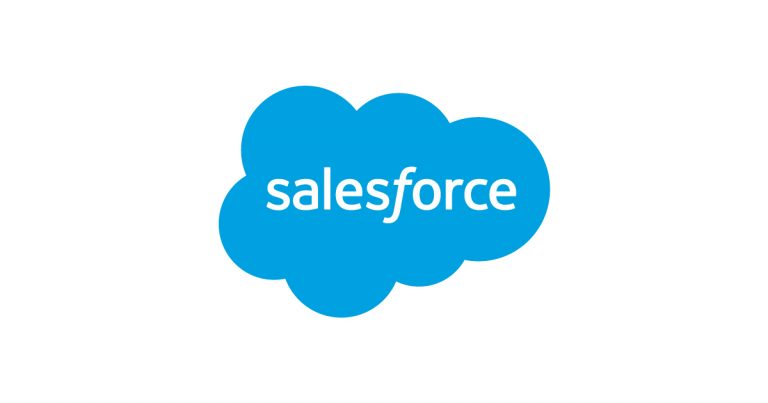87% of business buyers expect reps to act as trusted advisors. By diving into their pain points and finding a champion, you can be the one they turn to.
Attracting qualified prospects — companies that are a good fit for your product or services — is more important in B2B (business-to-business) sales than earning a large number of leads. Identifying high-quality leads can be challenging though, which is where a sales methodology like the MEDDIC sales framework comes in.
What you’ll learn:
Drive pipe faster with a single source of truth
Discover how Sales Cloud uses data and AI to help you manage your pipeline, build relationships, and close deals fast.


What is the MEDDIC sales process?
Pioneered in the 1990s by Jack Napoli, the MEDDIC framework transforms teams into sales powerhouses by delving deep into the elements of the customer buying experience. This provides insight into a prospect’s needs so you can zero in on qualified buyers who are a good fit for your product or service.
Every component of a purchase process allows for more accuracy and efficiency in closing deals. When you apply MEDDIC, you’ll better understand how the steps in this process can transform your sales team. And by the end, you’ll know more about your customer than you have before.
Let’s start with what MEDDIC means. It’s an acronym that stands for:
- Metrics
- Economic buyer
- Decision criteria
- Decision process
- Identify pain
- Champion
Now, let’s look at how MEDDIC works, and how you can use it to close more deals.
What are the stages of MEDDIC?
Each letter in MEDDIC stands for a category to consider when evaluating the value of a lead. While the steps are laid out here to follow the acronym, the order itself is inconsequential. These are elements of a total framework — not sequential steps. Here’s what you need to know about each one:
Metrics
Any good sales strategy is centered on what matters most to your customers. For B2B customers, success is often determined based on metrics, so you want to consider which metrics are most important to them and how your product will impact them.
For most prospects, the most important metrics are:
- Cost: How much they’ll spend on your product or service based on their account size and usage
- Savings: Any potential money or time savings they can expect from using your product
- Return on investment (ROI): A calculation of what your product is likely to be worth when weighing savings and improved results against the product’s cost
The prospects most likely to see the biggest ROI from your product should be your highest priority. Any time you can show evidence that a high ROI is likely, it makes your case stronger and increases the likelihood that you’ll be able to close that sale.
ROI aside, the goal is to determine what your prospect cares about most — and then focus on that. One lead may want to cut down on time-consuming tasks, while another is more concerned about increasing customer renewal numbers. Your sales pitch for each of these prospects should highlight different features and case studies to cater to their priorities.
Economic buyer
The next category in the MEDDIC sales process is to identify the person (or people) who have the most authority in the purchasing decision. Since the B2B purchasing process often includes multiple stakeholders, it’s important to make sure you’re talking to the one who can authorize financial decisions. Putting a lot of effort into nurturing your relationship with one contact in the organization may not pay off if it turns out that the real decision-maker is their boss’s boss.
But keep in mind that the economic buyer isn’t always singular. In B2B sales, needing to win over multiple decision-makers is normal. Be prepared to navigate discussions and sales pitches with multiple parties to close the deal. As such, it is important to determine everyone who will be involved in the decision, who has approval and veto power, and what different priorities they each have.
Decision criteria
The third category in the MEDDIC sales strategy is about understanding those needs and priorities, particularly as they relate to the purchasing decision process. A lead’s criteria may not neatly line up with what you consider the product’s main selling point. Their decision criteria may include how well the product integrates with their current tech stack, whether it’s easy to use without training, or what ongoing customer support looks like.
Understanding their decision criteria enables you to tailor your pitch to what matters most to them. This can include ease of implementation, compatibility with existing systems, cost, and return on investment (ROI).
And since you understand the full range of features and benefits your product can offer, you may be tempted to give a comprehensive pitch that covers all of them. But if your prospect is only interested in a small subset of features, a broad pitch isn’t a good use of their time (or yours). An approach that’s focused on their specific needs and priorities will keep them more engaged and receptive.
Decision process
Next, figure out the steps your prospect normally follows when they evaluate a new vendor. You’ll need to be prepared to accommodate your clients along the way.
Every company has a different buying process, so keep that in mind. For example, some companies may have a Request for Proposal (RFP) process you need to follow, or a specific list of regulatory requirements they need to meet. Stay nimble since every buyer has their own way of operating. If you understand their needs, you can work to proactively meet them, easing the way for them to choose your product.
Identify pain
The fourth stage in the MEDDIC sales analysis is taking time to learn about each customer’s explicit needs and pain points. Ask prospects about the main challenges they face and how they’re impacting the business. Actively listen and try to understand the implications of the issues they describe.
This category is about pinpointing what happens if their problem is not solved, and how your offering can help.
Prioritize leads that have clear pain points that your team is well-experienced in solving. When you know their top challenges, you can present case studies and testimonials from current customers who solved similar problems using your product. Let’s say a prospect is concerned about how much they’re spending on IT consultants. If you can show a clear example of how your product saved another business thousands in IT fees because of easy setup, that makes their decision much easier.
Champion
The last step in the MEDDIC sales framework is to try to find your internal “champion.” That’s someone working at the company who clearly understands the value you offer and can help convince their colleagues to buy. If you’re lucky, the champion and economic buyer may be one and the same. However, the champion could also be lower in the hierarchy, but the problems you’re solving for directly impact them. And even if your champion is not a manager, they could have influence, and be a valuable resource in helping you win the sale.
Having an ally on the inside can make the sales process run more smoothly. A good champion can help facilitate faster deals, bigger contract sizes, and easier account management. They can help get you into the right rooms and guide you on the most effective priorities to emphasize with each stakeholder. If you can find someone early on who truly gets what your product can offer, it makes the business a much more promising prospect to pursue.

Thanks, you’re subscribed!

How to implement the MEDDIC sales process
Once you’ve decided to use the MEDDIC sales framework, you want to introduce it to your sales team in the right way to get the most out of it. Use these steps to implement the MEDDIC sales process effectively.
- Clearly define your buyer personas: For sales reps to effectively apply the MEDDIC sales analysis, they need to have a good idea of what an ideal customer looks like for your business.
- Get your sales team on board: Any time you introduce a new process to your team, you want to make sure they understand why it’s valuable. Outline the MEDDIC sales benefits to your reps; make the case for how it will make their jobs easier and improve conversions.
- Clarify what the MEDDIC sales process will look like in your organization: Work out step-by-step instructions for how sales reps should apply MEDDIC, so everyone’s clear on precisely how to use the framework effectively.
- Equip your team with the right tools: In order to use MEDDIC successfully, you need a good way to keep track of all your customer data. A good Customer Relationship Management (CRM) tool is crucial here. Sales reps should be able to easily access an up-to-date record of everything you know about each lead and all your interactions with them to date. Ideally, you also want good analytics to help you track the success of different sales approaches, features that help with customer research, and generative AI features to help sales reps more quickly craft emails or call scripts with the right messaging.
- Provide ample sales enablement content: Each step in MEDDIC gives sales reps information they can use to tailor their approach to the prospect. If they have a large library of sales content available, then picking the right case studies, articles, and webinars to share with the prospect based on their particular situation is that much easier and quicker.
- Provide training: If you want sales reps to apply MEDDIC correctly and consistently, you need to give them clear details on how to do so. Put together training resources to get everyone up to speed on how your MEDDIC process works, and provide periodic reminders and updates to keep it fresh in their minds. Start including MEDDIC training as part of your onboarding process for new hires to the sales team as well, so they know how to use it from day one.
- Take (and apply) feedback from your team: Your sales team will be the people on the ground using the MEDDIC framework and seeing its results. Pay attention to what they have to say about how it’s working, and how it could be better.
- Document and learn from each success and failure: Keep track of win/loss data to understand which sales tactics are getting results. Consider recording sales calls to analyze how they went. Keep track of the information reps send to each lead, so you can measure the relative success and look for opportunities to strengthen your resources.
- Update your processes as needed: Always be willing to apply what you learn from sales feedback and data insights into your processes. There’s always room for improvement, and that applies to your MEDDIC framework as much as anything else.
Join the Salesblazer movement
We’re building the largest and most successful community of sales professionals, so you can learn, connect, and grow.

Other sales methodologies to consider
MEDDIC is just one of several sales methodologies you can use for lead qualification. MEDDIC often makes the most sense for B2B companies selling a high-cost product that’s likely to undergo long, complex sales cycles. If that doesn’t describe your business, another option may make more sense. Before you settle on any one framework, it’s worth considering all your options. Some other popular sales methodologies to consider are:
BANT
BANT (Budget, Authority, Need, and Timeline) is simple and easy to put into practice. It works best for companies with a short sales process.
- Pros: Simplicity, efficient qualification (and disqualification), an emphasis on purchase readiness, and seamless sales and marketing alignment
- Cons: Limited context, ignores multi-stakeholder buying committees, a lack of focus on relationship-building, and a risk of disqualifying good-fit prospects
NEAT
NEAT (Needs, Economic impact, Access to Authority, and Timeline) is another simple option that’s focused on considering the broader economic impact of your solution for the customer.
- Pros: Relationship-focused and flexible for modern selling cycles
- Cons: Time and resources investment, a high level of skill required, and may not be suitable for a wide selection of industries
SPIN
SPIN (Situation, Problem, Implication, and Need-Payoff) emphasizes thoroughly understanding your customer’s pain points so you can tailor your approach to focus on how you’ll help alleviate them.
- Pros: Very customer-centric, highly effective for complex sales, and is research-backed
- Cons: Time-consuming, high skill requirement, not suitable for a wide range of products, and can create customer frustration with frequent changes
Consider MEDDIC to save time and make deeper customer connections
A standardized sales process can help your sales team avoid wasting time on bad leads, tailor their sales approach to each prospect, and close more deals. MEDDIC is a proven framework that has led many businesses to greater success, and may be just what yours needs as well. Try it out, but be willing to tweak your processes and make changes to how you approach lead qualification based on what works.
There’s more than one right way to build a successful sales process — and it pays to be adaptable.
Onboard fast, sell faster
See how Sales Cloud speeds up the sales cycle with data and AI, making you more efficient at every step.













